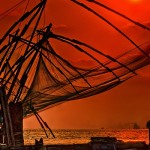History of Kasaragod
Kasaragod was once known to the Arabs by the name Harkwillia. Kasaragod District was organised as a separate district on 24 May 1984. Kasaragod was an important trade center.Duarte Borbosa, the Portuguese traveler who visited Kumbla, near Kasaragod in 1514, recorded that rice was exported for coir to Maldives.Kasaragod was part of the Kumbala Kingdom in which there were 64 Tulu and Malayalam villages. On being attacked by the Vijayanagara empire, it was still under the Kolathiri Raja who had Nileshwaram as one of his capitals. During the decline of the Vijayanagara empire, the administration of this area was vested with Ikkery Naiks. With the downfall of the, Venkappa Naik declared independence to Ikkery. Kumbla, Chandragiri and Bekal are considered to be the chain of forts constructed or renovated by Shivappa Naik.
Francis Buccanan, the family doctor of Arthur Wellesley, visited Kasaragod in 1800 had recorded information on places like Athiraparambu, Kavvai, Nileshwaram, Bekal, Chandragiri and Manjeshwaram. It was only in 1763 that Hyder Ali conquered Bedanoor , the capital of the Ikkery Naiks. His son Tippu Sultan conquered much of Malabar. As per the Sreerangapattanam Treaty of 1792, Tippu surrendered Malabar, except Tulunadu (Canara) to the British. The British got Tulunadu only after the death of Tippu Sultan.











Add Kasaragod History Feedback, Comments, Reviews